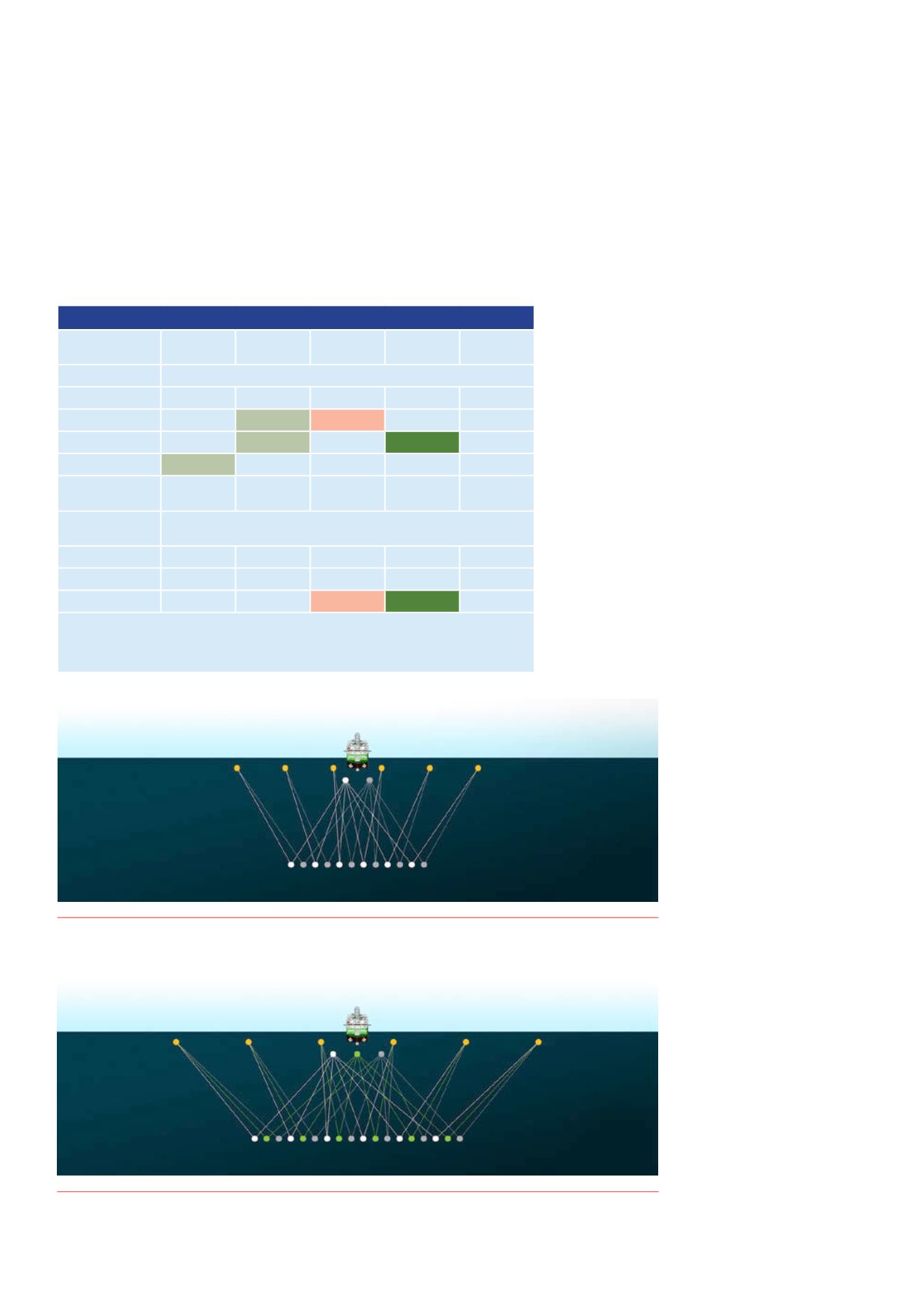
18 |
Oilfield Technology
June
2016
the effective removal of interfering shot energy in processing,
producing full-length clean records. When combined with
continuous recording, field record lengths can be optimised
based on shotpoint interval to ensure no ‘recording dead time’
between consecutive records while at the same time minimising
the number of duplicate samples between consecutive records.
The Capreolus 3D survey acquired by Polarcus off the west
coast of Australia and processed by Downunder Geosolutions is
a perfect example of this. The survey covered over 23 000 km
2
of an area that had previously been explored over 20 years ago,
but was receiving renewed interest after a well drilled in 2014
encountered oil. What was particularly interesting about this oil
find is that according to the widely regarded understanding of
the petroleum system, the source rock was in the gas window in
the vicinity of that well. A full reworking of the petroleum system
interpretation was required, which presented a unique seismic
problem – acquire with dense shotpoint intervals to maximise
effective fold (fold inside the inner mute) and resolve subtle
stratigraphic and structural elements of shallow reservoirs,
while still capturing long record lengths to ensure illumination
of source rock and basement down deep. Conventional, source
initiation constrained shooting would require separate surveys
to achieve both of these objectives, one with a short
shotpoint interval/record length pair for getting the
fine detail in the shallow, and a second with long
record length for capturing deep reflections. By using
continuous recording in the field to decouple the
shotpoint interval form the record length, a 12.5 m
shotpoint interval was paired with an 8 second
long record, the bottom three seconds of which
contained overlapping energy from the subsequent
shot. Consecutive 8 second shot records from the
field were then concatenated into super records at
Downunder Geosolutions’ Perth processing centre,
where interfering shot energy was removed, and
12 second clean records output. The dense shotpoint
interval satisfied the need for high horizontal and
vertical resolution in the shallow section, while the
12 second long record length ensured that reflection
energy from the deep targets was captured. It is
worth noting that the absence of ‘recording dead
time’ in the field means that final clean records could
be output at any reasonable user-desired length.
The Capreolus survey
proved that the method of
dense shotpoint acquisition
with continuous recording,
paired with overlapping shot
removal in processing was
effective, robust, and reliable
over what is probably one of
the largest 3D marine seismic
surveys ever acquired. The
data density was increased by
150% compared to what would
have been achieved with the
31.25 m shotpoint interval
that would have been required
to produce 12 second clean
records in acquisition. The
company has since acquired
with ~9.5 m shotpoint interval
on a recent survey, a further
25% increase in data density.
While some may argue that the
orders of magnitude increase
in data density made possible
by this overlapping shotpoint
acquisition and processing
would have the greatest impact
on the final image, leveraging
this shot density over multiple
Figure 4.
XArray triple source geometry.
Figure 3.
Conventional dual source geometry.
Table 2. Cross line CMP sampling interval
Streamer
separation (m)
62.5
75
100
150
200
Number of sources
Cross-line CMP sampling interval (m)
1
31.25
37.5
50
75
100
2
15.63
18.75
25
37.5
50
3
10.42
12.5
16.67
25
33.33
5
6.25
7.5
10
15
20
Number of
streamers
Sail line interval (m)
8
250
300
400
600
800
10
312.5
375
500
750
1000
12
375
450
600
900
N/A
The table shows cross-line CMP sampling interval, and sail line interval achieved for different number
of source/streamer separation pairs, and a number of streamer/streamer separation pairs. Dark green
and orange cells compare an example XArray triple source configuration, and a conventional dual source
configuration respectively.


